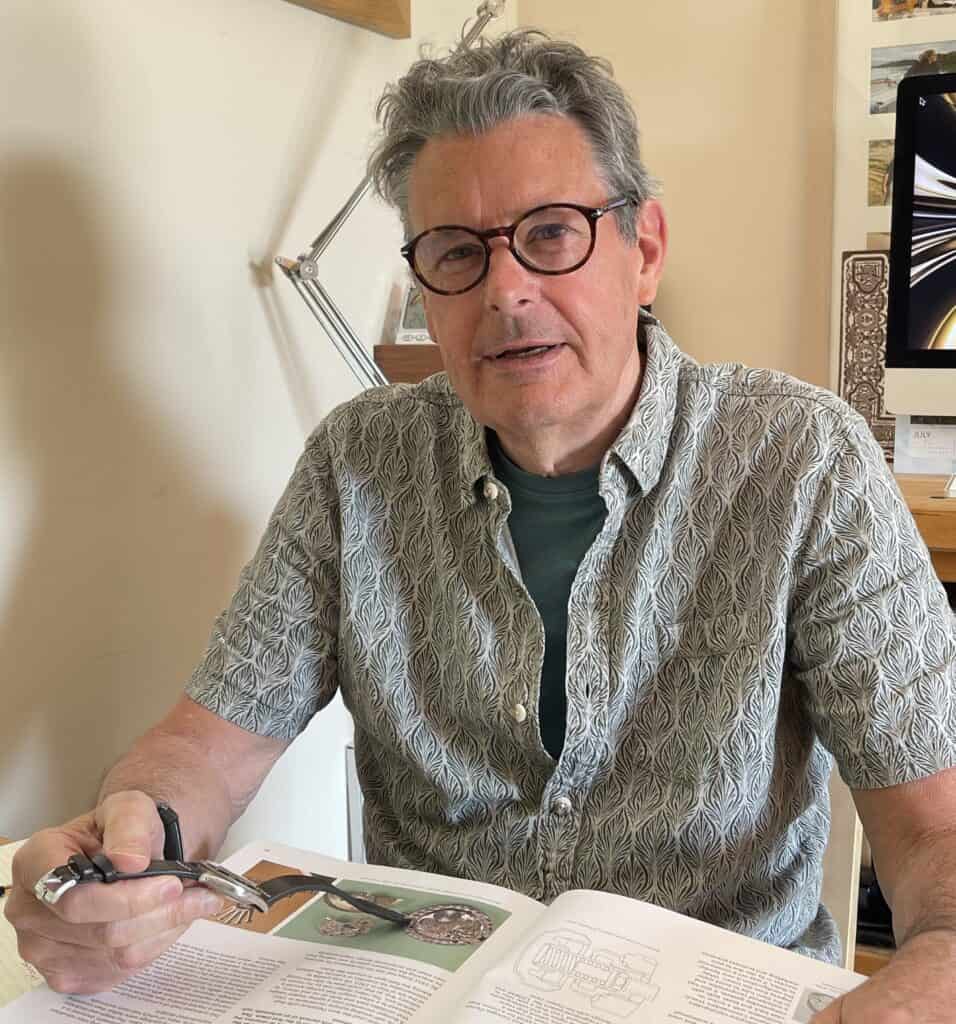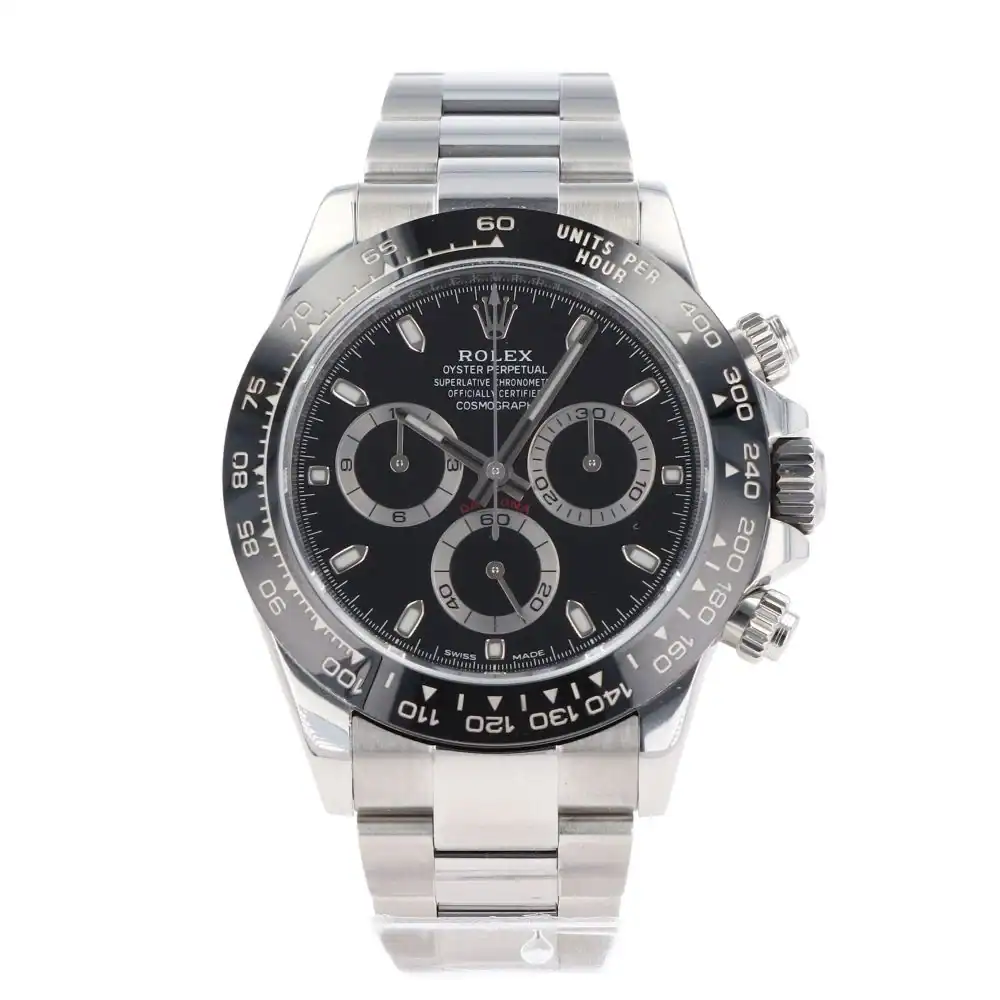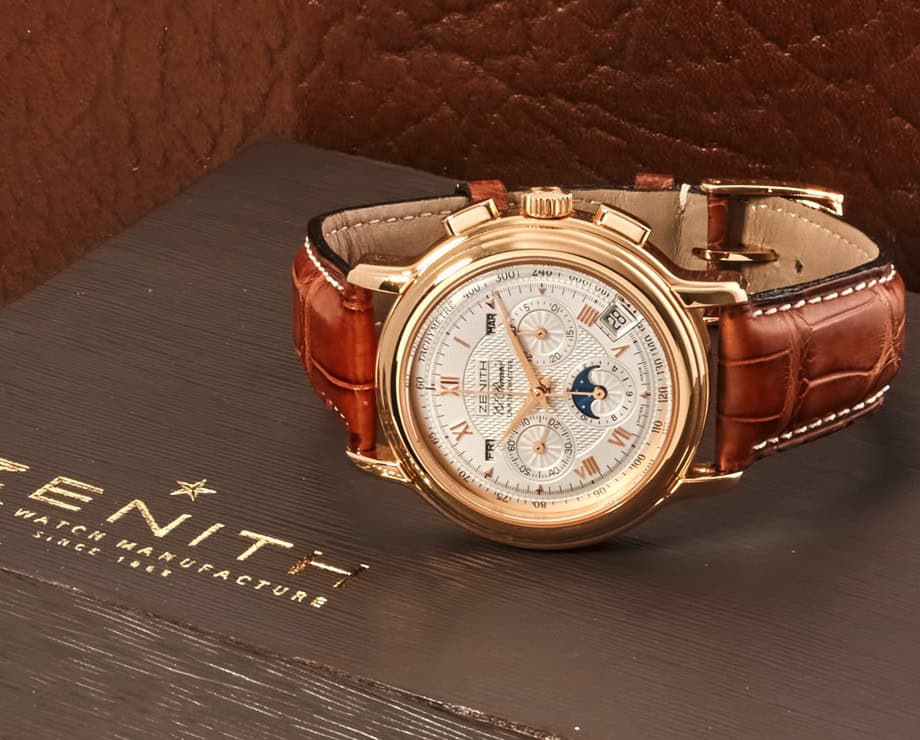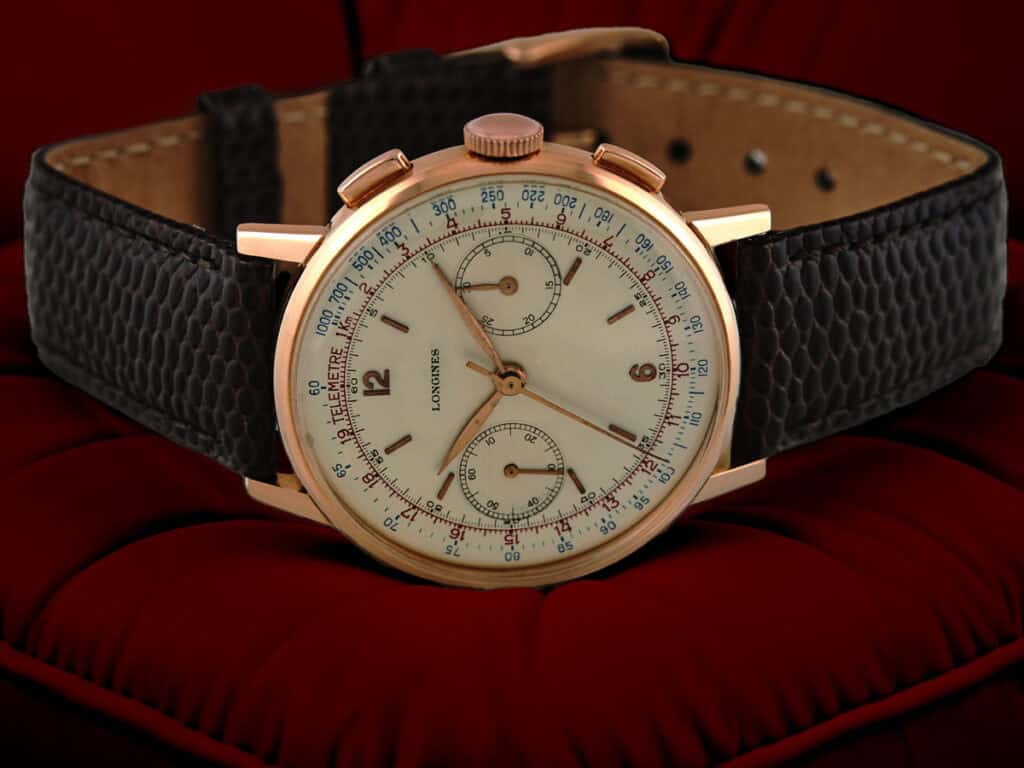By Alan Wood
A collector’s guide to vintage chronographs – exploring their iconic movements, historic milestones and why these timepieces remain in high demand today.

Alan Wood, founder of Vintage Gold Watches, is a trusted vintage watch dealer with over 35 years of private collecting experience. His deep knowledge and infectious passion for mechanical timepieces have earned him a highly respected reputation in the industry. Vintage Gold Watches, established in 2011, has become a reputable dealer thanks to Alan’s expertise and a skilled team of restorers. Alan’s love for vintage watches started as a young Mechanical Engineer and grew into an obsession. He believes the finest watches were made in the 1950s, ‘60s and ‘70s, and he is thrilled to share them with others.
What makes vintage chronographs so sought-after? Join us as we delve into iconic movements, design quirks, collectibility, history and mechanical charm.
Chronographs hold a unique place in horology – part tool, part status symbol and fully fascinating. For collectors, there’s something about the symmetry of sub-dials, the satisfying click of a pusher and the mechanical mastery beneath the caseback that makes them irresistible.
Vintage chronographs, in particular, are enjoying renewed appreciation – not just for their style or nostalgia, but for the stories they tell and the craftsmanship they represent. As interest in mechanical watchmaking continues to grow, the vintage chronograph remains one of the most coveted complications for serious collectors and passionate newcomers alike.
From astronomy to the autodrome
The word ‘chronograph’ comes from the Greek chronos (time) and graph (writing) – a nod to its earliest incarnation. In 1816, Louis Moinet invented a device to track celestial movements, widely regarded as the first chronograph. Over a century later, as wristwatches replaced pocket watches, the complication took on a more practical role.
By 1913, Longines had launched one of the first chronograph wristwatches, powered by its 13.33Z movement – a single-button design that let the user start, stop and reset via the crown. Two decades later, Breitling added a second pusher for the reset function, creating the now-familiar two-button layout.
Chronographs became indispensable tools across fields: pilots used them for navigation, racing drivers for lap timing and doctors for pulse measurement. From military use to motorsport, the chronograph wasn’t just decorative – it was essential.
Mechanical magic: why collectors care
What makes vintage chronographs so special? Part of it is the tactile, interactive nature of the complication. Unlike a moonphase or perpetual calendar – complications you admire more than use – a chronograph begs to be operated. There’s a mechanical satisfaction to feeling the resistance of the pusher and watching the hand sweep around the dial.
Collectors also appreciate the challenge. Chronograph movements are mechanically complex, requiring precise engineering to integrate the stopwatch function with standard timekeeping. Older examples were built by hand, often in small runs, with brands sourcing movements from specialist ébauche manufacturers and building unique cases around them.
Visually, the chronograph dial tends to be busy, but beautifully so. The balance of sub-dials, tachymeter or telemeter scales and contrasting hands and markers creates a layered, purposeful look – a design language that’s instantly recognisable.
Then there’s rarity. Many vintage chronographs were produced in limited numbers, particularly from smaller or now-defunct brands. That scarcity, combined with the stories behind the movements, adds to their mystique and market value.

Movements that made the difference
Not all chronograph calibres are created equal. Some movements are renowned for their reliability; others for their technical innovation. These are a few of the most influential:
Valjoux 72
Arguably the most legendary hand-wound chronograph movement, the Valjoux 72 was introduced in the 1930s and stayed in production for decades. It powered a range of high-profile watches, from early Rolex Daytonas (pre-Zenith era) to Heuer Carreras and Universal Genève Compaxes.
With its column-wheel architecture and three-register layout, the Valjoux 72 set the standard for mid-century chronographs. Today, it remains highly sought-after – not only in its most famous forms but in the less obvious marques that used it. Brands like Wittnauer, LeJour, and Clebar offer entry points for collectors looking for Valjoux 72-powered pieces without the Rolex premium.
Venus 175 & 178
Before Valjoux absorbed Venus in the 1960s, the Venus calibres were go-to choices for many respected manufacturers. The 175 featured a two-register layout, while the 178 added a third sub-dial and powered many Breitling Navitimers and Wakmann chronographs.
What sets the Venus calibres apart is their combination of ruggedness and refinement. They were well-finished for their time and relatively easy to service, making them popular with brands – and still a smart choice for modern collectors who want something both wearable and mechanically interesting.
Landeron 48 Series
One of the most commercially successful chronograph movements of the mid-20th century, the Landeron 48 and its variants powered a huge number of watches – particularly from less well-known Swiss makers. It was cheaper to produce and had a unique pusher sequence (start/stop on one button, reset on another).
Landeron-powered chronographs are often more affordable on today’s vintage market, making them a great entry point for collectors starting out. And while they lack the column-wheel prestige of the Valjoux or Venus, they hold historic and visual charm in spades.
Calibre 11/El Primero/Seiko 6139
In 1969, the chronograph world changed forever. Three manufacturers – Heuer (with Breitling and Hamilton), Zenith, and Seiko – each unveiled a self-winding chronograph movement within months of each other. Zenith’s El Primero offered a high-beat (36,000vph) automatic chronograph that still defines the brand. The Calibre 11, famously modular and side-mounted, gave us the square-cased Monaco. Meanwhile, Seiko’s 6139 was quietly the first to market — and remains an undervalued gem.
These automatic chronographs mark the crossover from tool to luxury object – signalling a shift in how chronographs were worn and by whom. For many collectors, these late-60s and early-70s watches represent the most exciting era of chronograph evolution.

How to collect (and what to look for)
Vintage chronograph collecting can be as daunting as it is rewarding. Movements are often shared between brands, making knowledge key. Here are a few tips for building a collection with confidence:
- Condition matters but so does originality. A perfectly aged dial with a few imperfections is often preferable to a heavily polished or redialled example.
- Know your movement. Learn the characteristics of key calibres – not just Valjoux and Venus, but Landeron, Lemania and others. Many brands used the same base movement but finished or cased them differently.
- Look beyond the big names. While Omega Speedmasters and Rolex Daytonas are dream pieces, many under-the-radar watches use the same movements at a fraction of the cost.
- Serviceability counts. Some movements, like the Valjoux 7733 or Landeron 148, are easier and cheaper to service than others. Parts availability can make a big difference.
- Buy from trusted sources. Whether it’s a reputable dealer or a well-regarded forum seller, transparency and documentation are your best friends.
Mechanical beauty that lasts
The chronograph remains a mechanical marvel – a complication that connects science, sport, and style. Vintage examples add layers of history, rarity, and soul that modern watches often struggle to replicate.
Whether you’re after a military-issued two-register chronograph, a racing-inspired panda dial or a lesser-known gem with a storied movement, the vintage chronograph offers something few other timepieces can: enduring character with a heartbeat you can actually hear. In a digital world, that’s a complication worth collecting.
Find out more at Vintage Gold Watches and sign up to the Vintage Gold Watches newsletter newsletter for timely insights, the latest arrivals and expert takes on the vintage watch market, delivered straight to your inbox.

